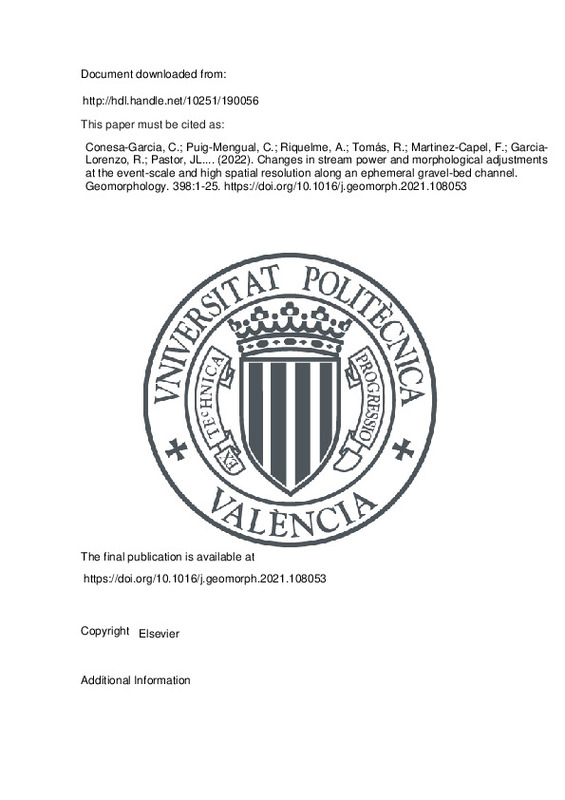JavaScript is disabled for your browser. Some features of this site may not work without it.
Buscar en RiuNet
Listar
Mi cuenta
Estadísticas
Ayuda RiuNet
Admin. UPV
Changes in stream power and morphological adjustments at the event-scale and high spatial resolution along an ephemeral gravel-bed channel
Mostrar el registro completo del ítem
Conesa-Garcia, C.; Puig-Mengual, C.; Riquelme, A.; Tomás, R.; Martinez-Capel, F.; Garcia-Lorenzo, R.; Pastor, JL.... (2022). Changes in stream power and morphological adjustments at the event-scale and high spatial resolution along an ephemeral gravel-bed channel. Geomorphology. 398:1-25. https://doi.org/10.1016/j.geomorph.2021.108053
Por favor, use este identificador para citar o enlazar este ítem: http://hdl.handle.net/10251/190056
Ficheros en el ítem
Metadatos del ítem
| Título: | Changes in stream power and morphological adjustments at the event-scale and high spatial resolution along an ephemeral gravel-bed channel | |
| Autor: | Conesa-Garcia, Carmelo Puig-Mengual, Carlos Riquelme, Adrian Tomás, Roberto Garcia-Lorenzo, Rafael Pastor, Jose L. Perez-Cutillas, Pedro Martinez-Salvador, Alberto Cano-Gonzalez, Miguel | |
| Entidad UPV: |
|
|
| Fecha difusión: |
|
|
| Resumen: |
[EN] Sediment budgets and morphological channel adjustments are closely related to changes in stream power. In ephemeral channels, whose geomorphic response depends on the magnitude and frequency of hydrological events ...[+]
|
|
| Palabras clave: |
|
|
| Derechos de uso: | Reconocimiento - No comercial - Sin obra derivada (by-nc-nd) | |
| Fuente: |
|
|
| DOI: |
|
|
| Editorial: |
|
|
| Versión del editor: | https://doi.org/10.1016/j.geomorph.2021.108053 | |
| Código del Proyecto: |
|
|
| Agradecimientos: |
This work has been financed by ERDF/Spanish Ministry of Science, Innovation and Universities-State Research Agency (AEI) /Project CGL2017-84625-C2-1-R (CCAMICEM) ; State Program for Research, Development and Innovation ...[+]
|
|
| Tipo: |
|







![[Cerrado]](/themes/UPV/images/candado.png)


